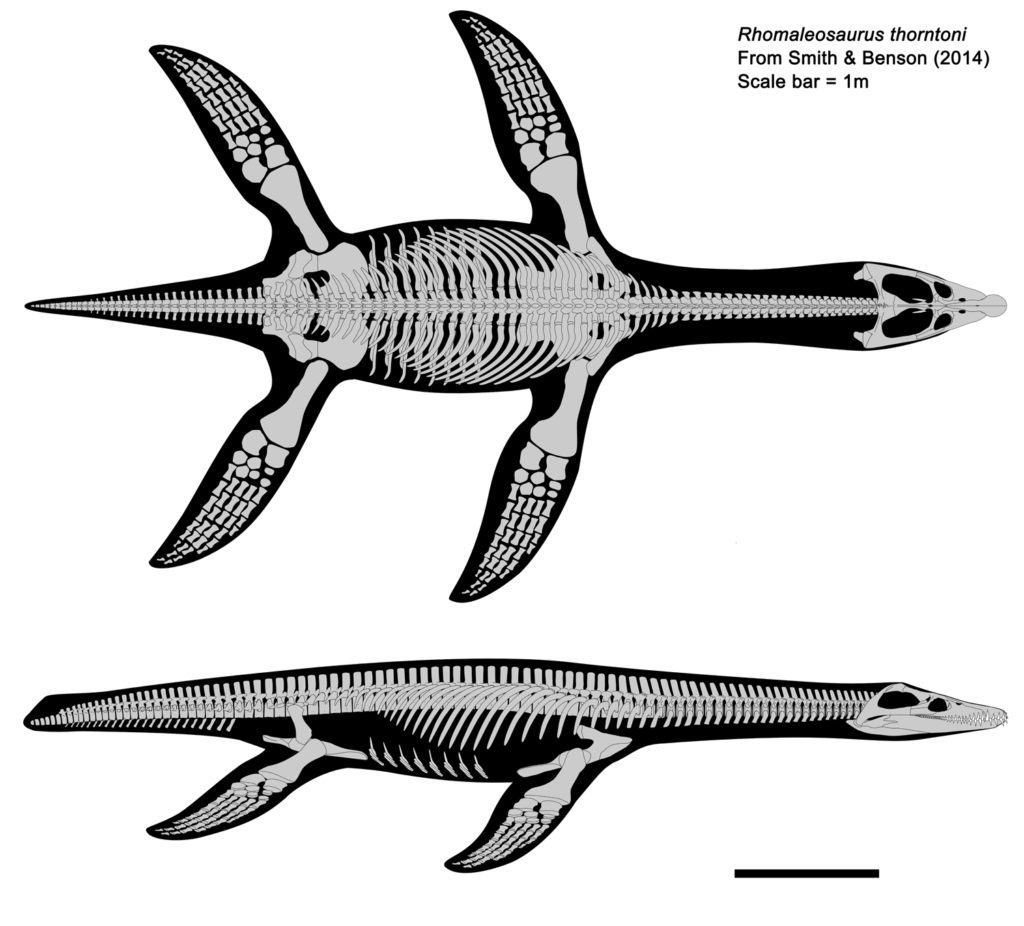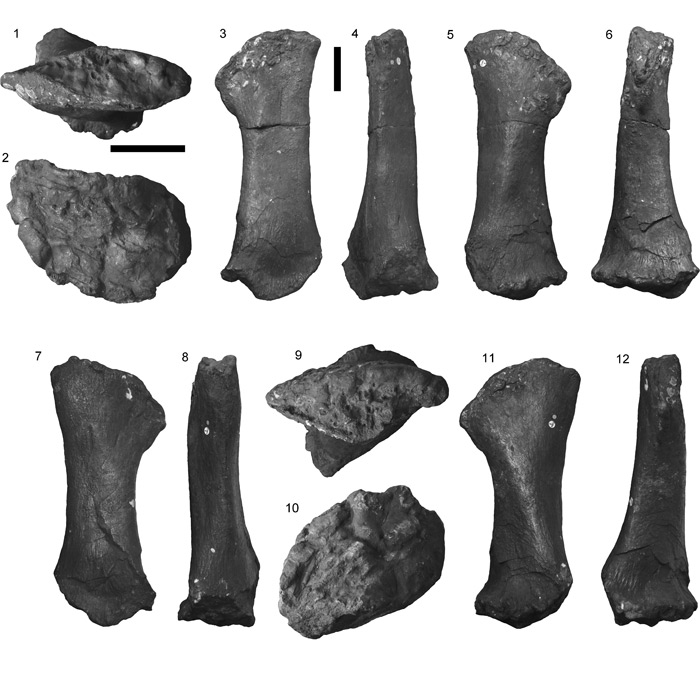Rhomaleosaurus

R. cramptoni
Rhomaleosaurus is the largest known Lower Jurassic pliosaur and was the top predator in early Jurassic marine ecosystems. It has a reinforced skull to help resist torsion and a ferocious set of teeth, a combination of characters perfect for snatching and killing cephalopods, fish, and other marine reptiles. Historically, the genus Rhomaleosaurus has been interchangeable with now invalid ‘Thaumatosaurus’. See my blog article Whatever happened to ‘Thaumatosaurus‘? for more information on that.
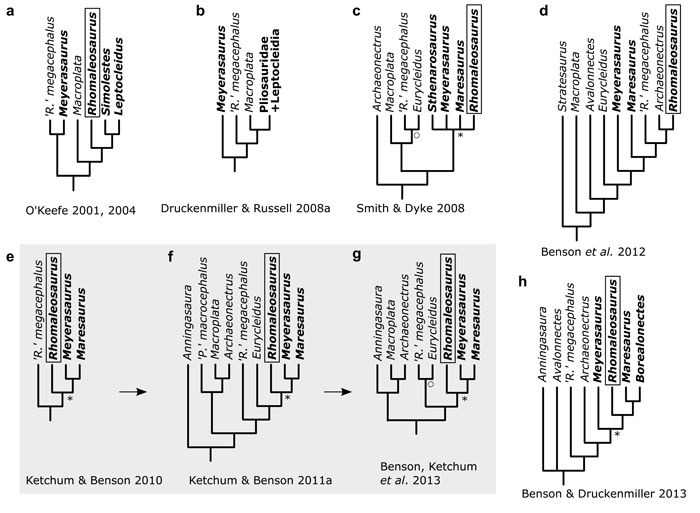
Several species previously referred to Rhomaleosaurus are now classified as distinct genera or junior synonyms of other species of Rhomaleosaurus. The species ‘Rhomaleosaurus’/’Thaumatosaurus’ victor (Fraas 1910) was described as a new genus, Meyerasaurus; the species ‘Rhomaleosaurus’ longirostris (Blake 1876, in Tate and Blake 1876) is now regarded as a separate species of Hauffiosaurus (Benson et al. 2011b); and ‘Rhomaleosaurus’ megacephalus is now known as Atychodracon (Smith 2015).
The history of NMING F8785 (The holotype specimen of R. cramptoni)
The type specimen of Rhomaleosaurus (R. cramptoni) is held in the National Museum of Ireland (Natural History) and at 7m long is the largest complete pliosauromorph ever discovered.

In 1848, the fossil skeleton of R. cramptoni was unearthed by workers in an alum quarry at Kettleness on the Yorkshire coast. The magnificent fossil was secured for five years at Mulgrave Castle, the home of the Marquis of Normanby, owner of the quarry. But the specimen soon moved home to Ireland. The Marquis presented the fossil to his friend Sir Philip Crampton in 1853, who brought the specimen to Dublin to display it as the centrepiece at the 1853 British Association annual meeting. A specially constructed building was created by the Zoological Society of Ireland to accommodate the huge specimen and the fossil found a temporary home there.
In 1863 the specimen was loaned for display in the Royal Dublin Society museum and was scientifically described and named (Carte and Baily 1863a, Carte and Baily 1863b). In 1877 the Royal Dublin Society museum was incorporated into what is now known as the National Museum of Ireland, and the ‘Science and Art Museum, Dublin’ as it was called at the time, paid 200 pounds to acquire the specimen permanently.

In 1890 the fossil moved again, this time into the museum’s ‘fossil hall’. But in 1962 this hall, located beside the main Natural History Museum building on Merrion Street, was demolished and the specimen was transferred into storage. The stored collection was moved yet again in 1992 to the National Museum of Ireland (Natural History) reserve stores at Beggars Bush, where the giant reptile resided while I was conducting my PhD on the beast.
The fossil has now moved with the rest of the collection to other off-site storage. (Thanks to Nigel Monaghan for correcting some historical details.)

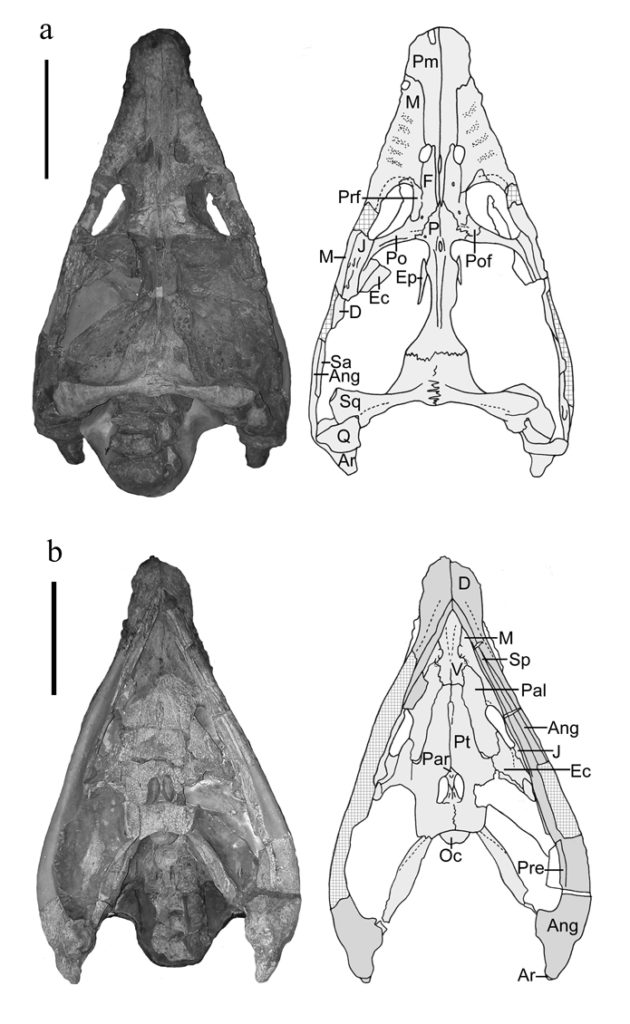
Casts of Rhomaleosaurus cramptoni
A number of casts were made of the fossil throughout its history, probably purchased from Henry. A. Ward, who dealt in replica fossils including Rhomaleosaurus cramptoni, throughout the late 1800s. Specimens are on display in Bath, London and New York (Smith 2006). Many casts are unique in some aspects. Look closely (see above), and you will notice that the two forelimbs are identical copies of each other in the Bath cast. To add extra confusion, this duplicated limb is in the wrong place – it is actually a hindlimb – the two hindlimbs in the cast are really forelimbs placed in the wrong sockets. The London specimen is also unique, a new set of limbs have replaced the original ones which were mounted wrongly.


Rhomaleosaurus zetlandicus
Mike Taylor studied the holotype of R. zetlandicus for his Ph.D. thesis and subsequently published a description of the cranial anatomy (Taylor 1992b). Vincent and Smith (2010) referred the holotype of R. propinquus to R. zetlandicus

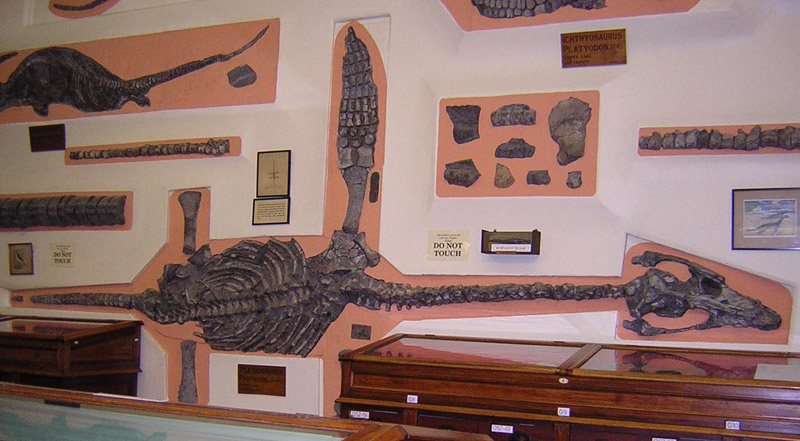
Rhomaleosaurus thorntoni
R. thorntoni was first described briefly by Andrews (1922a). Smith and Benson (2014) described and figured R. thorntoni in detail in a monograph on the holotype specimen.
